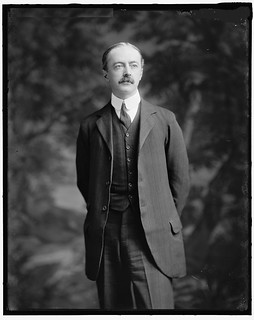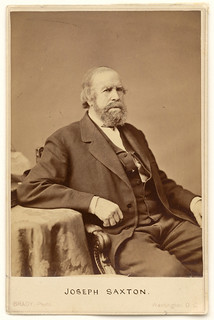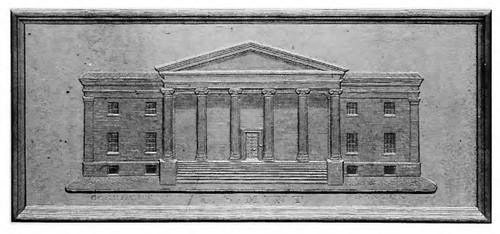
PREV ARTICLE
NEXT ARTICLE
FULL ISSUE
PREV FULL ISSUE
V25 2022 INDEX E-SYLUM ARCHIVE ARTHUR HENRY FRAZIER (1899-2000)American Numismatic Biographies author Pete Smith submitted this article on author Arthur Henry Frazier. Thanks! -Editor
Addition to List of Hundred-Year-Old Numismatic Authors
This week I discovered another numismatic author who lived for more than a hundred years. He has the additional distinction of living in three centuries. His contribution to numismatics is a little off the main path, but still relevant.
Arthur Henry Frazier (1899-2000)
His education was delayed with service in the Army during World War I. He attended the University of Wisconsin and received a B.S. in civil engineering in 1928. He began work as a junior engineer with the United States Geological Survey (USGS) in August 1928. After an initial assignment in Wisconsin, he was transferred to St. Paul in 1930 and to Washington D. C. in 1935. He designed new equipment to measure the flow of water in rivers and streams. In 1941 he was appointed chief of the Division of Field Equipment. In 1946 he was sent to Columbus, Ohio, as director of the Water Resources Branch Equipment Laboratory. This was renamed he Equipment Development Laboratory. He stepped down as director in 1956. He retired in 1959 and received a Meritorious Service Award of the Department of the Interior. In retirement he translated works and published new reports on current meters. In addition to several books on waterflow management, he wrote Joseph Saxton and his Contributions to the Medal Ruling and Photographic Arts, published by Smithsonian Institute Press in 1975. His final publication in 1978 was U. S. Standards of Weights and Measures, Their Creation and Creators, also published by Smithsonian Institution Press. It is noted that Joseph Saxton was also involved with weights and measures as superintendent of Weights and Measures for the United States Coast Survey. He died, unmarried, in Madison, Wisconsin, on November 5, 2000, a few months into the twenty-first century. He is buried with his parents at Evergreen Cemetery in Manitowoc.
Joseph Saxton (1799-1873)
He dropped out of school at age twelve to work at his father's nail factory. Then he was apprenticed as a watchmaker but his employer soon died and Saxton moved to Philadelphia seeking employment there. He met Christian Gobrecht and observed Gobrecht's original 1817 attempt at a medal-ruling machine. While working for Isaiah Lukens in 1828, he built a four-faced clock for Independence Hall. From 1828 to 1837, he was working at the Adelaide Gallery of Practical Science in London, continuing to learn and improve machinery. Franklin Peale visited London and commissioned Saxton to build a balance scale for the Mint. Saxton returned with the scale to Philadelphia in 1837 and was employed at The U. S. Mint as superintendent of the weighing department. Joseph Saxton was a pioneer in photography. He read a newspaper account of the process developed by Daguerre and tried it the next day. On October 16, 1939, he took a picture from a window in the Second Mint looking out at Central High School and the State Armory building. The resulting image is the oldest surviving example of a daguerreotype in the United States. He left the Mint in 1843 to become superintendent of Weights and Measures for the United States Coast Survey and remained there until his death. He produced a set of standard weights and balances for each of the states. He died at home on October 26, 1873, in Washington, D. C.
The Saxton Medal-Ruling Machine
Joseph Saxton improved on Gobrecht's medal-ruling machine and reduced distortions to reproduce an image of a medal for reproduction in a book or catalogue. In this machine, a medal is placed in a horizontal position. A stylus is passed over the surface and the resulting line is cut by a graver into the surface of a horizontal copper plate. The position is changed in small increments forming a series of parallel lines that create the appearance of relief on the copper plate. The image on the plate appears reversed, but when inked and impressed on paper, the image is properly aligned. Eckfeldt and DuBois used Saxton's third version of the medal-ruling machine, now powered by steam, to produce engravings of coins in the Mint Cabinet for their 1842 book, A Manual of Gold and Silver Coins of All Nations Struck Within the Past Century. Also illustrated was an image of the Second Philadelphia Mint. Saxton made a daguerreotype of the Mint, Christian Gobrecht made a small relief model, an electrotype shell was made and used in place of a medal. A description of the process is in pages 186-188 of the book. This marked a brief period of time when a daguerreotype and medal-ruling process were both used to create a printing plate. If photography had developed a decade earlier, it is likely that the medal-ruling technique would never have been used for book illustration.
Wayne Homren, Editor The Numismatic Bibliomania Society is a non-profit organization promoting numismatic literature. See our web site at coinbooks.org. To submit items for publication in The E-Sylum, write to the Editor at this address: whomren@gmail.com To subscribe go to: https://my.binhost.com/lists/listinfo/esylum All Rights Reserved. NBS Home Page Contact the NBS webmaster 
|



